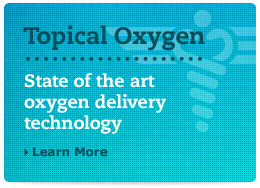
Armed conflict around the world, the US Army, Combat Casualty Care Research Program (CCCRP) has prioritized better technologies and treatments for wound care. Two major concerns for CCCRP on the battlefield are blood loss and infection. Hemostatic agents to stop
bleeding and stabilize the wounded have been deployed to improve survival. After stabilization, accelerated wound healing is essential to minimizing the potential for serious complications such as infection, loss of tissue and limb atrophy (DARPA Objectives). CCCRP, Bone and Soft Tissue Research has focused on technologies and treatments to accelerate wound and tissue
healing to save lives and function to return wounded soldiers to active duty and conserve combat strength.
The military requires an easy to use topical wound dressing (antimicrobial / analgesic / hemostatic / temporary skin substitute) that will expedite wound healing on the battlefield to conserve combat strength. Burn wounds and other soft tissue injuries requiring skin grafts are common occurrences among the wounded war fighter. According to a recent review of the literature, Roeder et al., thermal injuries have historically been a source of morbidity and
mortality in times of war and reports from current conflicts include similar statistics, 5% to 20% of all injuries and approximately 4% mortality (1). The number of admissions for excision and
grafting procedures has increased. Many of these injuries require extensive harvesting of autogenous donor sites and serial procedures. Many patients require excision and skin grafting require serial procedures to heal the wounds and would benefit from faster wound healing of donor sites for re-harvesting. Wound healing is often the rate-limiting factor in wound closure
and survivability (See Appendix F, Joint Theater Trauma System Clinical Practice Guidelines, June 25, 2012). Compromised donor site wound healing increases patient vulnerability to infections and loss of body homeostasis according to Nuutila et al. (2). An ongoing objective of soft tissue trauma and burn research is to evaluate various available wound technologies and treatments to accelerate donor site wound healing in order to return
soldiers to active duty. According to the, wound healing is key to survival in patients with major burns, >20%, (Nitzschke, Presentation ABA, 2012) (3). Therefore, faster, effective, wound healing may be essential to morbidity and mortality for patients (3).
A common way to treat donor sites for split thickness skin grafts for burn care is Xeroform (3% Bismuth Tribromophenate and USP Petrolatum in a blend, on a fine mesh gauze). Xeroform has been used to treat donor sites at the USAISR. According to the USAISR, treatment with Xeroform has demonstrated varying degrees of healing times, infection rates, and patient perceived level of pain (3). Accelerating the healing process and reducing pain during healing would be beneficial outcomes for all patients: to expedite return to duty or work; reduce the risk of infection from an open wound; improve quality of life; and possibly reduce the need for analgesic medication (which can cause other side effects) (3).
The USAISR Clinical Evaluation, (ABSTRACT-K. F. Lairet, MD, FACS, L. C. Cancio, MD, FACS,
M. L. Leas, RN, C. Galin, RN, E. M. Renz, MD,
FACS, D. G. Baer, PhD,
U.S. Army Institute of Surgical Research, Fort Sam Houston, TX) results demonstrated OxyBand Wound Dressing™ healed wounds significantly faster than the standard of care, Xeroform™ with significantly less pain, without infection. The significant results confirm the results from previous proprietary OxyBand Wound Dressing™ clinical studies. The study was funded by the DOD to evaluate the efficacy of the OxyBand Wound Dressing™ with the objective of evaluating whether OxyBand Wound Dressing™, the oxygen diffusion dressing would accelerate healing compared to the standard of care to improve care for the wounded war fighter. Since the donor site model has similar characteristics to other partial thickness wounds, the results from the study suggest OxyBand Wound Dressing™ could directly benefit the wounded war fighter for most partial thickness wound care. For example those requiring donor sites for
skin grafts and other wounds. The successful results from the funded study should benefit many patients and meet the objective for improving treatments for battlefield and other wounds. OxyBand Wound Dressing ™ provides a key metabolite to the wound in an easy to use dressing for self and buddy-care as well as field and for clinical settings.
The positive results from the study should benefit the wounded in many settings. An ongoing objective of soft tissue trauma and burn research is to evaluate various available wound dressings and develop new treatments to expedite wound healing in order to return the injured service member to full active duty. Other OxyBand oxygen diffusion devices could be beneficial to
regenerative medical technologies that rely upon oxygen as an essential nutrient for cell viability and tissue survivability (11-16).

